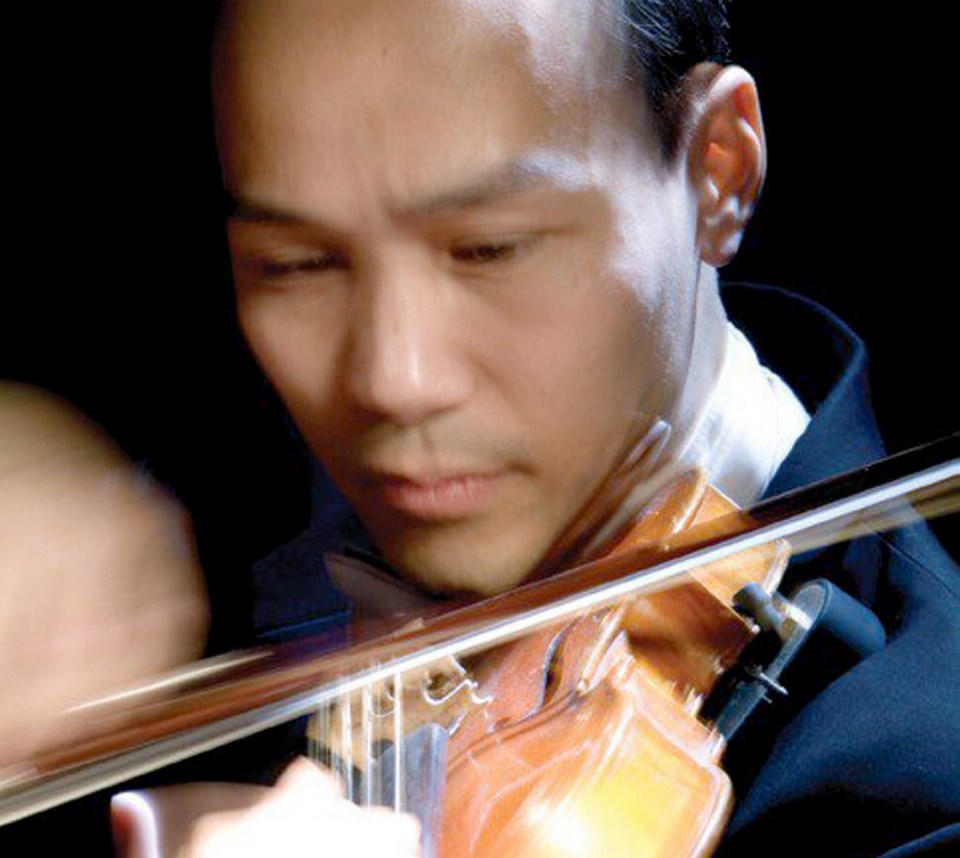What: Victoria Symphony (Masterworks): Tam Plays Shostakovich
When/where: Saturday, March 2, 8 p.m., Royal Theatre
Tickets: $33-$86. Call 250-386-6121 or 250-385-6515; online at rmts.bc.ca; in person at the Royal Theatre box office and the Victoria Symphony box office (610-620 View St.)
The Victoria Symphony’s Masterworks concert on Saturday, led by Austrian conductor David Danzmayr, will comprise two major works by the two most celebrated Russian composers of the Soviet era.
It is a program whose implications are fascinating and even disturbing: Both works have plentiful musical virtues, but are difficult to approach as mere entertainment given how starkly they reflect an especially dark period in Soviet culture.
The two works are Shostakovich’s Violin Concerto No. 1 (in which the solo part will be performed by the Victoria Symphony’s concertmaster, Terence Tam) and Prokofiev’s Symphony No. 7.
Both were completed during the Zhdanovshchina, a period of severe crackdown within Soviet culture, orchestrated by Andrei Zhdanov, Stalin’s henchman and principal cultural ideologue. This period of cultural terror and paralysis began soon after the end of the Second World War and ended only with Stalin’s death in 1953.
For musicians, the Zhdanovshchina began early in 1948, with a conference at which musicians were urged to purge their ranks of “unhealthy” elements, followed by a Communist Party resolution condemning “formalist” and “anti-people” tendencies in Soviet music. In the resolution, many composers — including Shostakovich and Prokofiev — were denounced, and the state vowed to take the measures necessary to promote a more “realistic” direction for Soviet music.
The dire consequences of the resolution will be on display, in different ways, in both halves of Saturday’s program.
In early 1948, Shostakovich was at work on his Violin Concerto No. 1. He finished it in March, and announced it publicly, but finally opted not to have it performed. The concerto, in four diverse movements (Nocturne, Scherzo, Passacaglia, Burlesca), was in some respects a throwback to the ironic, acerbic style that had got him into trouble years before, so he feared that it would be denounced as “formalist.” Moreover, the scherzo had Jewish inflections, and Stalin was now mounting a virulent campaign of official anti-Semitism.
Despite making conciliatory public statements in the wake of the resolution, Shostakovich fell from official favour. His career was ravaged, his health declined and he began to live in fear. He apparently even contemplated suicide. Major works of his were now either banned or rarely performed. Desperate for money, and needing to offer “safe” music to the public, Shostakovich composed film scores, ballet suites, vocal works on acceptable patriotic texts. He continued to compose serious and personal works, too, but these mostly joined the violin concerto as music “for the desk drawer.”
In the decade after Stalin’s death, however, Shostakovich benefited from a “thaw” in Soviet culture. He was rehabilitated and permitted to resume his place within Soviet musical life. Previously blacklisted works returned to the active repertoire, and many “desk drawer” works had belated premières, including the Violin Concerto No. 1, which was finally performed in 1955, in Leningrad.
Like Shostakovich’s public music of the Zhdanovshchina, Prokofiev’s Seventh Symphony, completed in 1952, was intended to be “safe,” fit for public consumption under contemporary conditions.
It succeeded all too well. The music is well-crafted, accessible, attractive, ardent, upbeat — and, for all that, difficult to listen to without wincing, once one is aware of the circumstances in which it was created. It is untroubled music created under threat — and what could be more troubling?
Prokofiev, who had fled Russia after the 1917 Revolution and had enjoyed a celebrity career based in New York and Paris, resettled permanently in the Soviet Union in 1936.
The prodigal son became a star back home, and willingly did musical services for the Soviet regime, yet he still fell victim to the 1948 resolution.
Though he abased himself before the regime and made severe creative compromises, the resolution undermined Prokofiev’s career (certain of his works, too, were banned) and ruined his physical and mental health. The years that followed marked a sad decline, personally and professionally.
The Seventh Symphony was his last completed orchestral work, and its première in Moscow in October 1952 was the last concert he attended.
Alas, Prokofiev did not live to benefit from the post-Stalin “thaw,” not even for a day: He died on March 5, 1953, the same day as Stalin.



